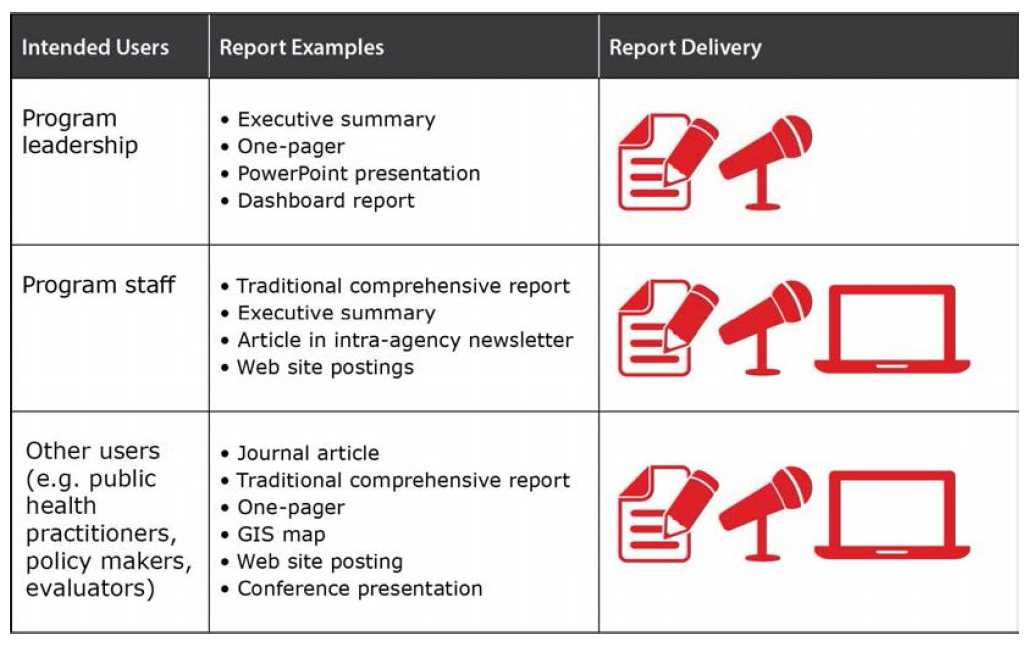Evaluation Reporting Guide
Making Evaluation Reports Work for You

Examples of reports and delivery formats.

Download the complete guide [PDF-7.4M].
The format you use to deliver your evaluation findings will affect how and whether the findings are used. Use these tips to help ensure your evaluation findings are used by your stakeholders.
- Use action-oriented reporting. Action-oriented reporting prompts your audience to action. This type of report is focused, simple, and geared toward a particular audience.
- Offer creative options for format of delivery, such as newsletter articles, a website, one-page fact sheets, executive summaries, and PowerPoint presentations or webinars.
- Communicate your findings in a way that the audience can easily understand. Write content to describe graphs, tables, and charts. Do not assume that your readers will look at both the displays and the narrative. Ensure that all of your graphs, tables, and charts can stand alone.
- Interpret the findings. Interpretation means looking beyond the data itself and asking what the results mean in relation to your evaluation questions. It is always a good idea to review the results with selected stakeholders before completing an evaluation report. This review can be accomplished by circulating an interim or draft report and holding a meeting to discuss it together.
- Include recommendations and lessons learned. The recommendations should address specific findings and be feasible, realistic, actionable, and tailored to intended users. A report that details lessons learned is particularly useful in contributing to public health practices and reporting for accountability purposes.
Get more tips and learn more about making evaluation reports work for you [PDF-7.4M].
- Page last reviewed: May 23, 2017
- Page last updated: May 23, 2017
- Content source:



 ShareCompartir
ShareCompartir